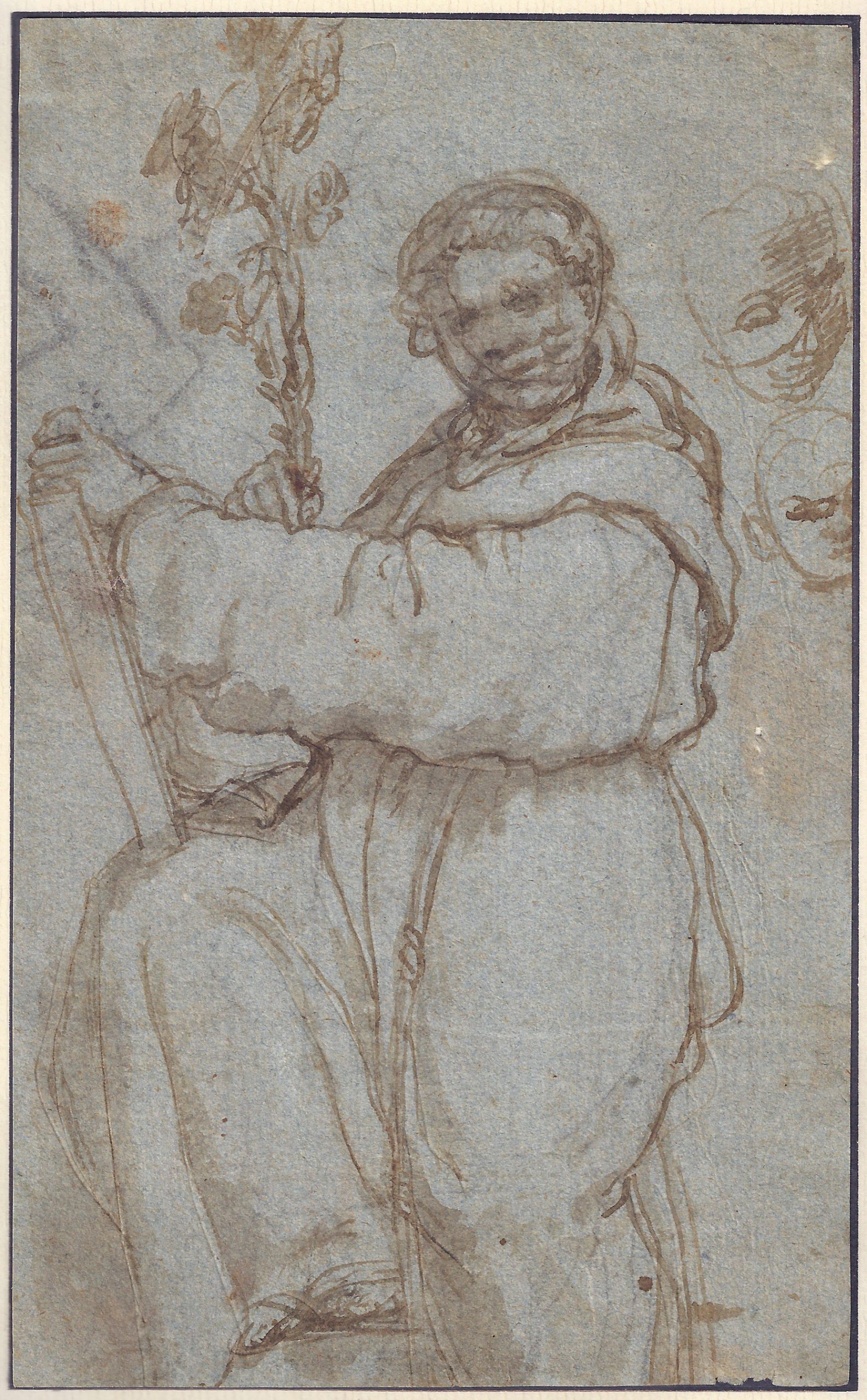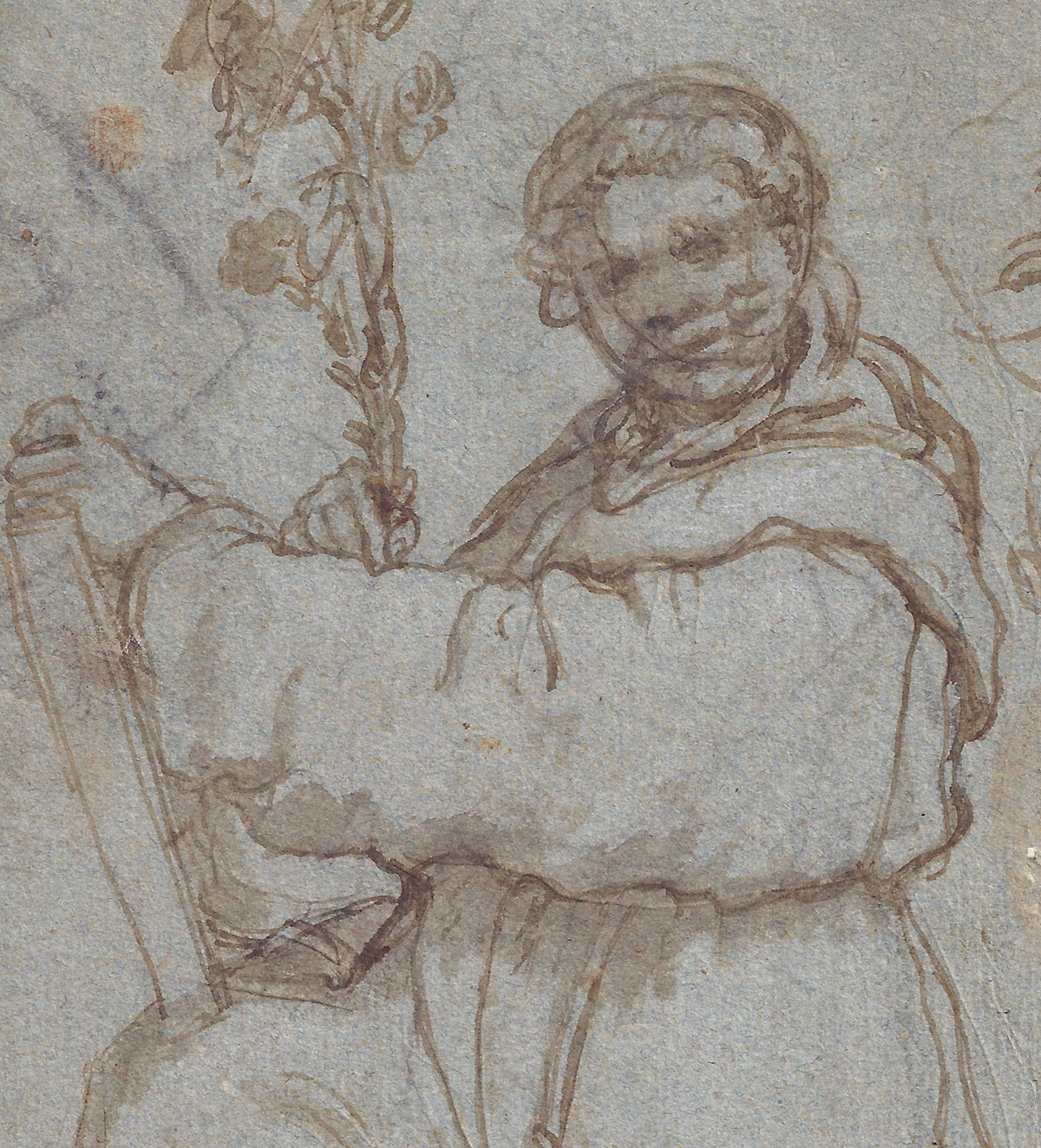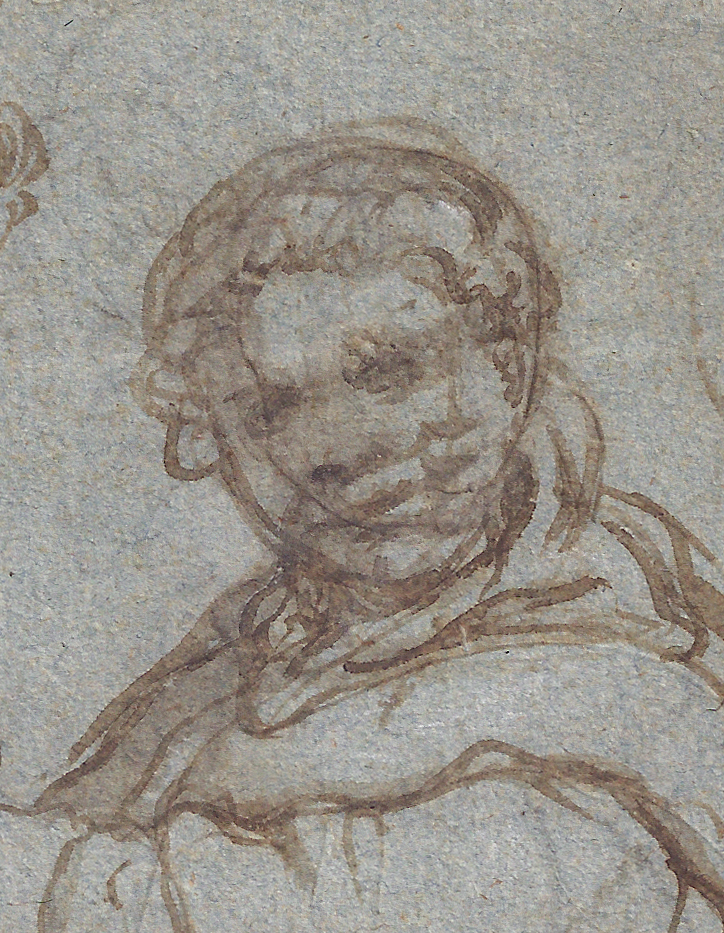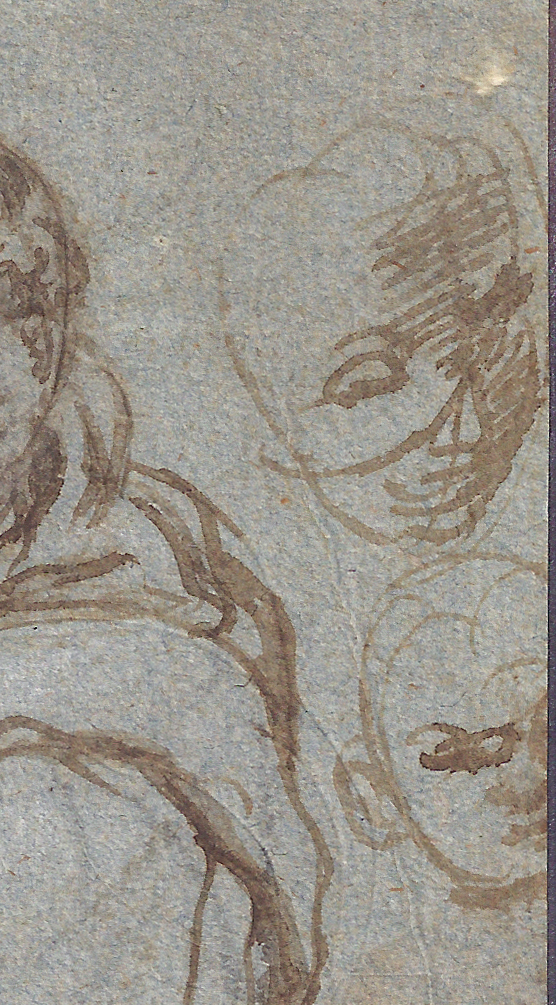NICCOLÒ MARTINELLI, called TROMETTA (Pesaro c. 1540 – 1611 Rome)
Niccolò Martinelli, called Trometta (Pesaro c. 1540 – 1611 Rome)
St Anthony of Padua, with two subsidiary sketches of the saint’s head
Pen and brown ink with brown wash over traces of black chalk, traces of white heightening, the outlines incised for transfer, on blue-grey paper, 223 x 136 mm (8.8 x 5.4 inch)
Provenance
Anonymous sale, Sotheby’s, New York, 8 January 1991, lot 59
Literature
Benezit, dictionary of artists, Paris 2006, vol. 13, p. 1195
***
Niccolò Trometta left his native Pesaro for Rome as a young man to study under Taddeo Zuccaro. Zuccaro and his younger brother Federico were also natives of Pesaro. It is thanks to John Gere that Trometta’s work has been recognized and a number of drawings once traditionally attributed to the ‘circle of the Zuccaros’ have been reattributed to the artist. Gere noted closer stylistic relationships between the work of Trometta and Taddeo Zuccaro – rather than Federico’s work – while nonetheless identifying Trometta as ‘a clearly defined individual’.1 Trometta’s altarpieces in his native Pesaro played a key role in importing the Roman late maniera to the Marches.2 With the notable exception of the frescoes for the church of S. Maria in Aracoeli in Rome, which rank as his greatest achievement, few painted works by Trometta survive.
The subject of this spirited sheet is St Antony of Padua. Born to a wealthy family in Lisbon, Portugal, in 1195, he was noted by his contemporaries for his forceful preaching and expert knowledge of the Scripture. Having died in Padua in 1231, the Franciscan miracle worker was declared a saint almost immediately after his death.
The outlines of the present sheet were incised, as is frequently the case in Trometta’s drawings. This could have been done to transfer the design to panel or canvas, or for the composition to be engraved. What is particularly fascinating about the present sheet is how it illustratates most vididly the draftsman’s creative ideas taking shape. Trometta originally drew the saint’s head turned to the right, as if looking over his shoulder, before he decided to move it to the left – the original position however is still faintly visible underneath the present head. He then swiftly drew the two subsidiary head sketches to the left of the saint, where he reverted to the original right-facing head.
SOLD
1. John A. Gere, ‘Drawings by Niccolò Martinelli il Trometta’, Master Drawings, vol. I, no. 4, 1963. p.10 ff.
2. Luciano Arcangeli, ‘La pittura del Cinquecento nelle Marche’, in Luciano Arcangeli et al., La pittura in Italia: Il Cinquecento, Milan 1987, p. 362.



